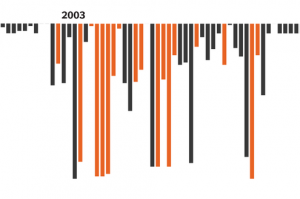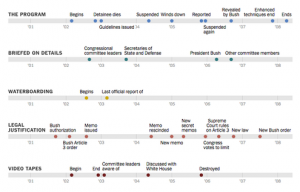Sentor Dianne Feinstein Torture Report

Sentor Dianne Feinstein: CIA torture techniques far more brutal than approved (FULL SPEECH)
Senator Dianne Feinstein called the practices detailed in the declassified report on the CIA’s Detention and Interrogation program a “stain on our values and on our history.”
For Dianne Feinstein, Torture Report’s Release Is a Signal Moment
 Dianne Feinstein, the chairwoman of the Senate Intelligence Committee, explaining the decision to report on C.I.A. tactics. Credit Jim Lo Scalzo/European Pressphoto Agency
Dianne Feinstein, the chairwoman of the Senate Intelligence Committee, explaining the decision to report on C.I.A. tactics. Credit Jim Lo Scalzo/European Pressphoto Agency
WASHINGTON — To Senator Dianne Feinstein, the need to make public the Senate Intelligence Committee’s report on the torture of terrorism detainees in the aftermath of the Sept. 11, 2001, attacks was never in question, despite years of determined resistance by intelligence officials and their allies.
“Nobody wants to do something that is going to bring on any kind of attack,” Ms. Feinstein, the committee’s chairwoman, told reporters after her hourlong speech from the Senate floor on Tuesday describing the report and its harsh criticism of the Central Intelligence Agency’s interrogation program. “But I came to the conclusion that America’s greatness is being able to say we made a mistake and we are going to correct it and go from there.”
Her speech was a signal moment for both the Intelligence Committee and Ms. Feinstein herself. At times, she had seemed to waver when pressure mounted against disclosing the report, which was assembled over five years by committee Democrats. But the 81-year-old from California — who is about to surrender the top role on the committee when the Republicans take control of the Senate in January — made a forceful case for a broad airing of the torture tactics.
 Document: The Senate Committee’s Report on the C.I.A.’s Use of Torture
Document: The Senate Committee’s Report on the C.I.A.’s Use of Torture
“I give her enormous credit,” said Senator Martin Heinrich, a Democrat from New Mexico who sits on the committee. “Given the coordinated efforts to try to keep that report from coming out, you can just see how much strength and backbone she has.”
Ms. Feinstein acknowledged that she had been given pause again in recent days by the suggestion from Secretary of State John Kerry, her former Senate colleague, that releasing the document could provoke unrest in the Middle East and elsewhere.
 Senator Dianne Feinstein, the Intelligence Committee’s Democratic chairwoman, defended the release of the torture report, saying, “this report is too important to shelve.” Video by Associated Press on Publish Date December 9, 2014. Photo by Stephen Crowley/The New York Times.
Senator Dianne Feinstein, the Intelligence Committee’s Democratic chairwoman, defended the release of the torture report, saying, “this report is too important to shelve.” Video by Associated Press on Publish Date December 9, 2014. Photo by Stephen Crowley/The New York Times.
“Her reservations, she said, were erased both by the realization that conditions in that region were not likely to improve and by a conviction that a relatively small number of C.I.A. workers were guilty of “brutality in stark contrast to our values as a nation.”
“My words give me no pleasure,” said Ms. Feinstein, who spoke as many of the committee’s staff members watched from the floor. But she said history would judge the nation by its “commitment to a just society governed by law and the willingness to face an ugly truth and say, ‘Never again.’ ”
 7 Key Points From the C.I.A. Torture Report
7 Key Points From the C.I.A. Torture Report
Among the report’s findings: The C.I.A.’s interrogation techniques were more brutal and the number of detainees higher than the agency portrayed.
Top Republicans described the report as a politically charged Democratic document that distorted events, contending that the intelligence obtained through the harsh tactics had helped in the disruption of terrorism plots and in the search for Osama bin Laden, who was killed in a Navy SEAL raid in Pakistan in 2011. They also said that Senate Democrats, and Ms. Feinstein in particular, would be responsible if there was any violent backlash.
“She will have to live with the consequences,” said Senator Richard M. Burr, the Republican from North Carolina who will be the chairman of the Intelligence Committee next year.
But at least one Republican was on her side. Senator John McCain of Arizona, who was tortured as a prisoner of war in Vietnam, followed Ms. Feinstein’s remarks with a powerful condemnation of torture. As he walked off the floor, Ms. Feinstein called out to him, walked over to his desk and gave him a kiss on the cheek.
In the report’s foreword, Ms. Feinstein said she “could understand the C.I.A.’s impulse to consider the use of every possible tool to gather intelligence and remove terrorists from the battlefield, and C.I.A. was encouraged by political leaders and the public to do whatever it could to prevent another attack.”
 The release of the Senate Intelligence Committee report on C.I.A. interrogation tactics added a new chapter to the national conversation on the government’s use of torture. Video by Emily B. Hager, Adam Freelander, Quynhanh Do and Mona El-Naggar on Publish Date December 10, 2014.
The release of the Senate Intelligence Committee report on C.I.A. interrogation tactics added a new chapter to the national conversation on the government’s use of torture. Video by Emily B. Hager, Adam Freelander, Quynhanh Do and Mona El-Naggar on Publish Date December 10, 2014.
“Nevertheless,” she continued, “such pressure, fear and expectation of further terrorist plots do not justify, temper or excuse improper actions taken by individuals or organizations in the name of national security. The major lesson of this report is that regardless of the pressures and the need to act, the intelligence community’s actions must always reflect who we are as a nation, and adhere to our laws and standards.”
Throughout the compilation of the report, the cautious Ms. Feinstein was torn between her allegiance to those who do the nation’s difficult intelligence business and her belief, shared by other committee Democrats, that there must be a public accounting of the C.I.A.’s conduct to prevent future occurrences.
 A History of the C.I.A.’s Secret Interrogation Program
A History of the C.I.A.’s Secret Interrogation Program
The Central Intelligence Agency used waterboarding, sleep deprivation and other techniques on dozens of the men it detained in secret prisons between 2002 and 2008.
A turning point for Ms. Feinstein came in March with the disclosure that C.I.A. workers had infiltrated the computers used by Senate Intelligence Committee staff members to write the report. The C.I.A. also had made a criminal referral to the Justice Department of some of the committee staff members, accusing them of improperly gaining access to secret agency material.
Incensed at what she saw as a breach of the separation of powers and an effort to intimidate her staff, Ms. Feinstein went public on the Senate floor and exposed the rift between the agency and the Senate. John O. Brennan, the director of the C.I.A., was forced to apologize to the Senate for his agency’s conduct, and no inquiry was pursued against the staff members.
Straddling the line between the administration and those clamoring for the release of the report, Ms. Feinstein engaged in a lengthy negotiation with Denis R. McDonough, the White House chief of staff, over the administration’s censorship of the report’s summary, primarily about the way in which pseudonyms would be used for some of those who ran the interrogation program.
The negotiations concluded mainly in the favor of the White House, but Ms. Feinstein believed the compromise was worthwhile if it meant being able to release the report before the Republicans took control of Congress.
“It is my sincere and deep hope,” she wrote in the foreword, “that through the release of these findings and conclusions and executive summary that U.S. policy will never again allow for secretive indefinite detention and the use of coercive interrogations.”

